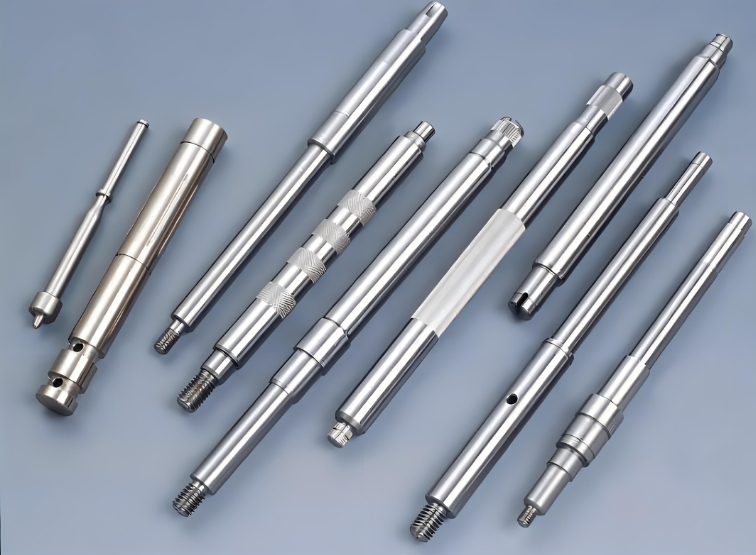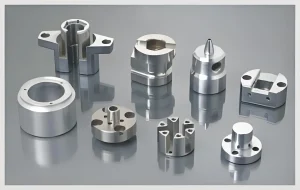在现代制造业, CNC加工 has become a crucial process for producing high-quality hardware parts. 数控系统 (计算机数控) machining offers a level of precision and efficiency that traditional machining methods often struggle to match. 然而, like any manufacturing process, it has its own set of advantages and disadvantages.

Advantages of CNC Machining Hardware Parts
1. 高精度
CNC machines are programmed to follow extremely precise instructions. They can produce hardware parts with tolerances as small as a few microns. This level of precision is essential in industries such as aerospace, 医疗的, 和电子产品, where even the slightest deviation can lead to significant problems. 例如, 在医疗植入物的生产中, the accurate dimensions and smooth surfaces achieved by CNC machining ensure proper fit and function within the human body, reducing the risk of complications.
2. 可重复性
Once a CNC program is created and optimized, it can be used to produce identical hardware parts over and over again. This reproducibility is invaluable for mass production. Manufacturers can maintain consistent quality across thousands or even millions of parts. 在汽车行业, 例如, CNC machining allows for the precise replication of engine components, ensuring that each vehicle performs reliably and meets strict quality standards.
3. 复杂的几何形状
CNC machines can handle complex shapes and geometries that would be extremely difficult or impossible to achieve with manual machining. Intricate designs with curves, 角度, and internal cavities can be easily produced. This is beneficial in the production of custom-made hardware parts for unique applications. 例如, in the design of high-end jewelry or specialized industrial equipment, CNC machining enables the creation of one-of-a-kind pieces with elaborate details.
4. 效率和生产力
数控机床可以连续运转, 24/7, 最少的人类干预. They can perform multiple operations in a single setup, reducing the overall production time. This leads to increased productivity and faster turnaround times for orders. 在竞争市场, rapid and efficient production can give a company a significant edge. 例如, a manufacturer of consumer electronics can quickly produce the necessary hardware components to meet the high demand during product launches.
5. 材料多样性
CNC machining can be applied to a wide range of materials, 包括铝等金属, 钢, 钛, and various plastics and composites. Different cutting tools and machining parameters can be adjusted to suit the specific characteristics of each material. This flexibility allows manufacturers to choose the most suitable material for a particular application based on factors such as strength, 重量, 和成本. 例如, 在航空航天业, CNC machining is used to work with lightweight yet strong materials like titanium alloys to build aircraft components.
6. Reduced Labor Intensity
Since CNC machines are automated, they require less direct labor compared to traditional machining. Skilled operators are mainly needed for programming, setting up the machines, and monitoring the process. This not only reduces labor costs but also minimizes the risk of human errors caused by fatigue or inattention. In a large manufacturing facility, fewer workers can manage a fleet of CNC machines, increasing overall operational efficiency.
Disadvantages of CNC Machining Hardware Parts
1. High Initial Investment
The cost of purchasing and installing CNC machines can be prohibitively expensive. High-quality CNC equipment, along with the necessary software and peripherals, requires a significant capital outlay. 此外, regular maintenance and upgrades are essential to keep the machines running optimally, which further adds to the cost. Smaller manufacturing businesses may find it difficult to afford such a large upfront investment, limiting their access to CNC machining technology.
2. Skilled Labor Requirement
While CNC machines reduce the need for extensive manual labor, they demand highly skilled operators and programmers. These individuals need to have a good understanding of machining principles, CAD/CAM software, and CNC controls. Training such personnel can be time-consuming and costly. There is also a shortage of qualified CNC technicians in the market, which can pose a challenge for companies looking to expand their CNC machining capabilities.
3. Programming Complexity
Creating accurate and efficient CNC programs requires a certain level of expertise. The programming process involves translating the design specifications of the hardware part into machine-readable code. Any errors or inaccuracies in the program can lead to defective parts or even damage to the machine. Debugging and optimizing programs can be a time-consuming task, especially for complex parts with multiple operations.
4. Limited Batch Sizes for Some Applications
Although CNC machining is suitable for both mass production and small batch production, in some cases, very small batch sizes may not be cost-effective. The setup time and programming effort required for each unique part may outweigh the benefits, especially when compared to other manufacturing methods like 3D printing for extremely low-volume production. 例如, if a company only needs a few prototype parts, the cost per part using CNC machining might be relatively high.
5. Power Consumption
CNC machines consume a significant amount of power, especially during continuous operation. This can lead to high energy costs, which can be a concern for manufacturers, especially those operating in regions with expensive electricity rates. 此外, the environmental impact of such high power consumption needs to be considered, as it contributes to carbon emissions.
6. Tool Wear and Replacement Costs
The cutting tools used in CNC machining are subject to wear and tear. Frequent replacement of these tools is necessary to maintain the quality and precision of the machined parts. High-quality cutting tools can be expensive, and the cost of tool replacement can add up, 特别适合大批量生产. 而且, improper tool selection or usage can lead to premature tool failure and further increase costs.
在CNC加工市场, rapid and efficient service providers like Rapidefficient play a crucial role. RAPIDEFFEDIC专门从事CNC铝加工, offering high-quality solutions for various industries. Their team of experienced technicians and advanced CNC equipment ensures precise and timely production of aluminum hardware parts. They focus on optimizing the machining process to minimize production time and costs while maintaining the highest quality standards. With a commitment to innovation and customer satisfaction, Rapidefficient is a reliable choice for companies in need of CNC aluminum machining services.






